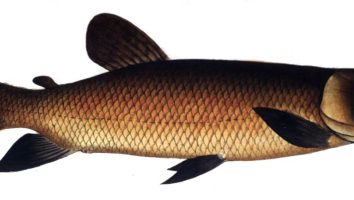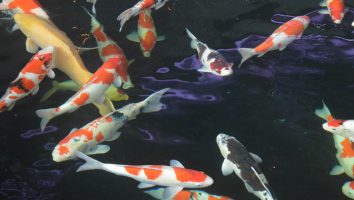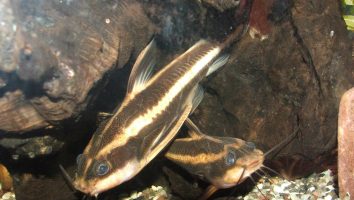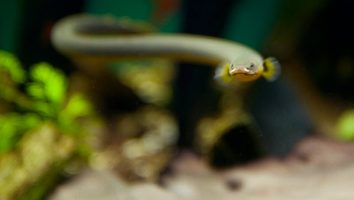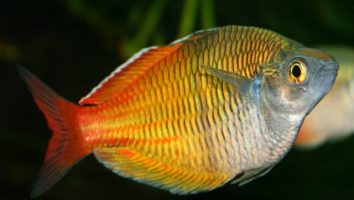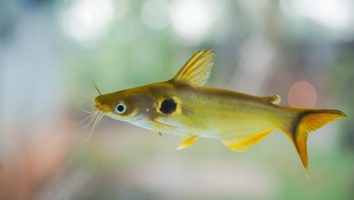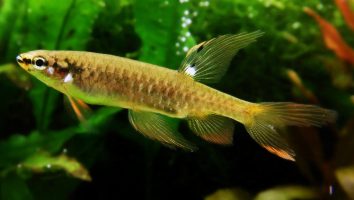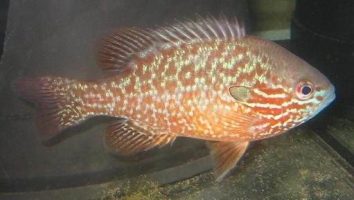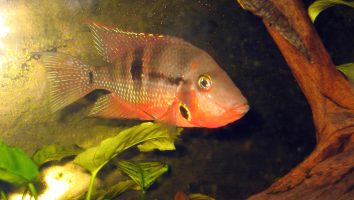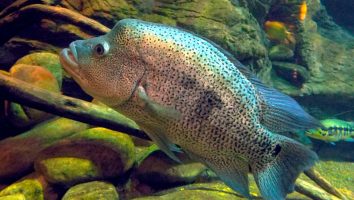The Cuban Gar is a beautiful and unique freshwater fish that is perfect for the advanced fishkeeper.
This species is not for the beginner, as they can be difficult to care for and are very sensitive to water conditions.
But if you have the time and patience to care for them properly, they make a stunning addition to any aquarium.
In this guide, you will learn everything you need to know about Cuban Gar care. From diet and tank mates, to breeding and common problems.
Table of contents
Species overview
Cuban Gars (Atractosteus tristoechus) are a species of freshwater fish that are native to Cuba and the Isle of Youth.
They are found in a wide variety of habitats, but prefer slow-moving waters with plenty of vegetation. This could be rivers, lakes, or even marshes.
Cuban Gars are carnivorous and primarily eat other fish. In the wild, they have been known to grow up to 6 feet long, although they are typically much smaller in captivity.
This fish is most popular for its unique appearance. It has a long, snake-like body and a wide mouth that is filled with sharp teeth. It is also one of the few species of freshwater fish that can change its color.
Appearance

The Cuban Gar is an eel-like fish that can grow to be quite large. They have a long and slender body that can reach up to 6 feet in length!
The Cuban Gar is a silver color with black spots that cover their entire body. These spots are most prominent on the dorsal half of the fish.
The Cuban Gar has a long and thin head with a small mouth that is filled with sharp teeth. They have small eyes that are located on the top of their head.
Their dorsal fin is located towards the back of their body and is tall and thin. Their anal fin is located towards the back of their body as well and is shorter than their dorsal fin.
The Cuban Gar has a long and thin tail that is used for propulsion.
Lifespan
The Cuban Gar is a long-lived fish with a lifespan that can extend up to 20 years in captivity. Of course, this depends on a number of factors, including the quality of care they receive.
As with any pet, if they’re not well cared for, their lifespan will be significantly shorter. But if you do everything right, you can expect your Cuban Gar to stick around for a very long time.
Size
Cuban Gars are one of the largest freshwater fish in the world, and they can grow to be massive! The average size of a Cuban Gar is between 6 and 8 feet long, but some have been known to grow up to 10 feet!
Tank
Tank Size
The recommended minimum tank size for a Cuban Gar is 100 gallons. If you’re looking for a smaller freshwater fish, this is not the fish for you.
Cuban Gars are active swimmers and will often swim laps around your tank. Providing them with a larger tank will help ensure they have enough space to comfortably swim around.
Water Parameters
The Cuban Gar is a freshwater fish that prefers warm, slightly brackish water. They are very tolerant of different water conditions, but prefer water with the following parameters.
- Water Temperature: 72-82 degrees Fahrenheit
- pH Levels: 7.0-8.5
- Water Hardness: 10-18 dGH
- Alkalinity Levels: 5-15 dKH
What To Put In Their Tank
As an apex predator, Cuban Gars don’t have a lot of natural predators in their environment. This means they can be a little on the aggressive side when it comes to other fish in their tank.
For this reason, we recommend setting up their tank with some pretty basic decorations. There’s no need to go overboard with plants or anything like that. A few pieces of driftwood or some rocks should be plenty.
When it comes to the substrate, these fish don’t really care too much. You can use gravel, sand, or even a bare bottom tank if you want.
One thing we do recommend is adding a decent amount of hiding spots. Cuban Gars are known to be pretty shy fish and like to have a place to retreat to when they feel threatened. This can be in the form of caves, driftwood, or even plants.
Just make sure whatever you use is big enough that your fish can fit inside it!
Common Diseases
The Cuban Gar is a tough fish that can withstand a lot of different water conditions. This makes them fairly resistant to disease, but they’re not immune to everything.
The two main diseases that you need to look out for are ich and hole-in-the-head disease.
Ich is the more common of the two and it will present itself as white spots on the body, fish, and gills of your fish.
Hole-in-the-head disease is less common but it’s still something you need to be aware of. This disease is caused by poor water quality and the presence of activated carbon in your tank.
It will present itself as one or two pits/holes in the skin of your Cuban Gar’s head.
Both of these diseases are treatable, but they’re both serious illnesses that need to be dealt with immediately.
The best way to prevent your Cuban Gar from getting sick is to maintain a high quality of water in their tank. A clean and stable environment will go a long way in keeping your fish healthy and disease-free.
Behavior & Temperament
The Cuban Gar is a large, beautiful fish that is native to the Caribbean. It is a popular choice for aquariums because of its unique appearance. The Cuban Gar is silver with black spots and has a long, eel-like body.
This fish is a peaceful creature that is not known to be aggressive. It is a good community fish and can be kept with other peaceful fish. The Cuban Gar is a bottom-dweller and does best in an aquarium with plenty of hiding places.
This fish is a nocturnal creature and is most active at night. During the day, it will often hide among the plants and rocks in the aquarium. The Cuban Gar is a carnivore and will eat smaller fish, crustaceans, and insects.
Tank Mates
Cuban Gars are large, predatory fish. In their natural habitat, they’re known to eat smaller fish, reptiles, and amphibians.
As a result, it’s important to be strategic when choosing Cuban Gar tank mates.
The best tank mates for Cuban Gars are other large, predatory fish. These fish are large enough to not be seen as prey and can hold their own against a Cuban Gar.
Some good Cuban Gar tank mates include:
- Arowana
- Peacock Bass
- Oscar
- Green Terror
- Jack Dempsey
- Firemouth Cichlid
Breeding
Cuban Gars are one of the harder species of fish to breed. They’re very particular about their habitat and water conditions. If everything isn’t just right, they simply won’t spawn.
The first step is to set up a breeding tank. It should be at least 100 gallons and contain a lot of hiding places. Driftwood, plants, and caves should all be added.
The water should be kept at a temperature between 82 and 86 degrees Fahrenheit. The pH should be between 7.0 and 8.0.
Once the tank is set up, add two females for every male. The male Cuban Gars will be the larger of the two sexes.
When ready, the female will lay her eggs in an area that the male has claimed. He will then fertilize them and guard them until they hatch.
Eggs usually hatch within 10 days. When they do, remove the adults from the tank. The fry will be very small and need to be fed live foods. Baby brine shrimp is a good option.
As they grow, you can begin to transition them to flakes or pellets.
Conclusion
The Cuban Gar is a freshwater fish that is native to Cuba. It is a member of the family Characidae and is closely related to the African tetras.
The Cuban Gar is a popular aquarium fish due to its unique appearance. It is silver in color with black spots on its body. The Cuban Gar can grow to be about 18 inches in length.
The Cuban Gar is a peaceful fish that is good for community tanks. It is not aggressive and gets along well with other fish.
The Cuban Gar is an easy fish to care for. It is not picky about its food and is not sensitive to water conditions.
The Cuban Gar is a good beginner fish for people who are new to keeping aquariums.

